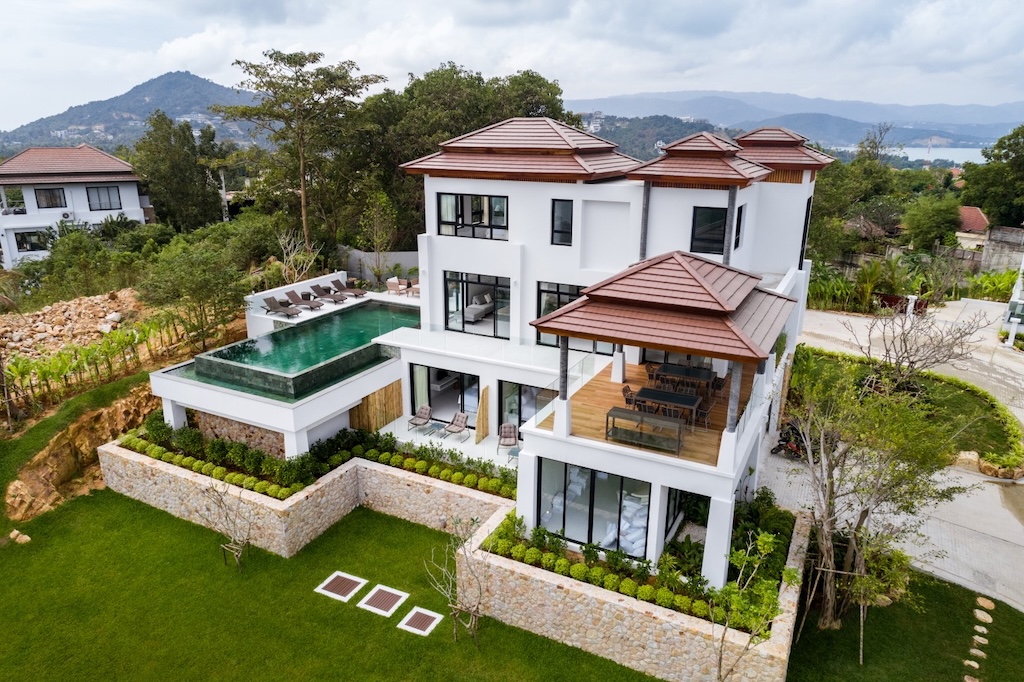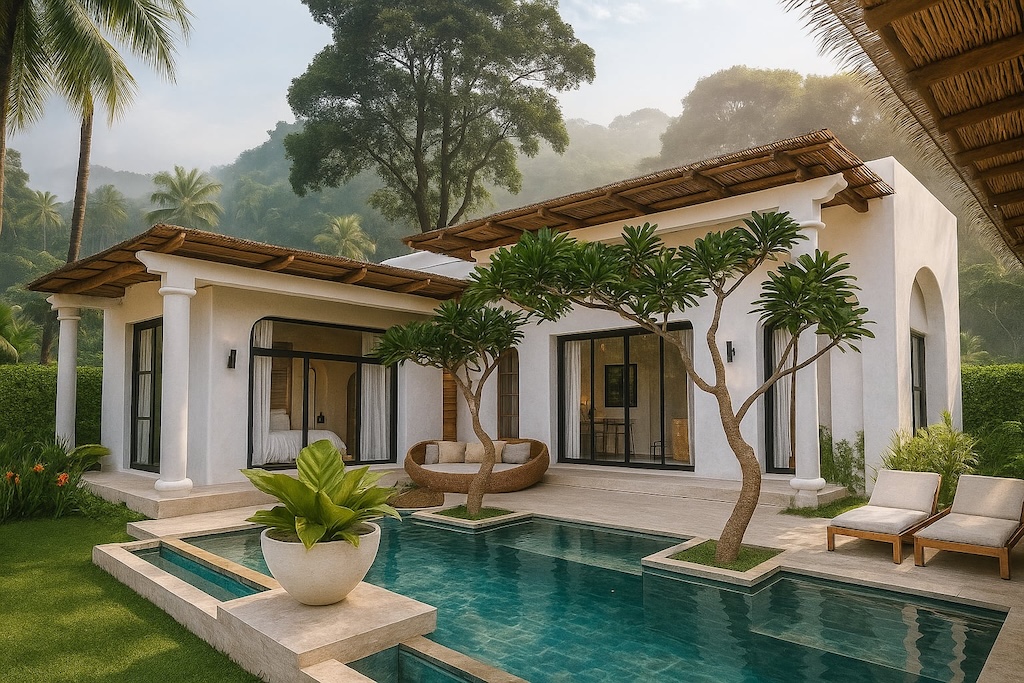
Discover the Rich Culture and History About Thailand
Thailand stands as the only Southeast Asian nation that was never colonized by European powers. This unique history has preserved one of the world’s most authentic cultural identities.
Street markets buzz with energy while temples shine in the sun. Beautiful beaches stretch along the coastline and festivals fill the air with excitement. Thailand gives visitors a unique experience through its timeless traditions. You’ll find fascinating stories about ancient kingdoms and see popular tourist spots that showcase centuries-old architecture. The country’s tropical climate adds to its charm year-round. Your trip can include exploring Bangkok’s modern skyline or relaxing on Thailand’s best beaches. A deeper understanding of the country’s heritage will change your viewpoint of this amazing nation.
This detailed guide takes you through Thailand’s cultural progress, religious practices, artistic traditions, and food heritage that have made this extraordinary country what it is today.
The Origins of Thai Civilization
Thai people’s roots go back more than a thousand years. Their ancestors came from northern Vietnam near the Dien Bien Phu area. This fact stands in stark comparison to this older belief about their southern Chinese origins.
Ancient Kingdoms and Early Settlements
Thai history starts with the rise of early civilizations. By 4000 B.C., communities in present-day Thailand had grown into centers of early bronze metallurgy. The first Thai kingdom, Sukhothai, emerged in 1238 after Thai chieftains overthrew their Khmer overlords.
The kingdom of Ayutthaya, 1350 years old, became a remarkable part of Thai history. The 17th century saw Ayutthaya become one of the world’s wealthiest and most cosmopolitan cities. The kingdom managed to keep extensive trade networks with:
- China and Southeast Asia
- European nations
- India and Sri Lanka
Influence of Indian and Chinese Cultures
Thailand’s culture shows a mixture of Indian and Chinese influences. From 290 BCE to the 15th century CE, Indian cultural influence spread across Southeast Asia. Local political systems absorbed Hindu-Buddhist elements. This exchange worked both ways – early Indian culture took shape from Southeast Asian, specifically Austroasiatic, influences.
Chinese effects on Thai society grew by a lot during the mid-19th century. The early 1900s showed about one-seventh of Thailand’s population as Chinese. Today, about one-tenth of people acknowledge their Chinese ancestry, though most have merged into Thai culture.
Rise of Thai Identity
Thai identity, or “Thainess,” grew stronger during the mid-nineteenth century under Kings Mongkut (Rama IV, 1851-1868) and Chulalongkorn (Rama V, 1868-1910). A major change came in 1939 with the country’s name change from Siam to Thailand.
Modern Thai identity rests on three pillars: nation, religion, and monarchy. This trinity appears in the national flag from 1917 and continues to reshape the scene of Thailand’s culture. Thailand balances its rich heritage with modern development in a unique way.
Traditional Thai Cultural Values
Thai cultural values add richness to your visit to this fascinating country. Thai society’s heart beats with a complex web of traditions, beliefs, and social norms that shape how people interact and build relationships.
Family and Social Hierarchy
Family is the life-blood of Thai social life. The structure goes beyond the nuclear unit and embraces extended family members and close friends. Thai families typically live in multi-generational households. 6.5 million extended families make up the largest group among Thailand’s 19.5 million families.
These family values stand out in Thai society:
- Absolute respect for parents and elderly
- Shared responsibility in child-rearing
- Strong emphasis on familial connections
- Duty to care for aging parents
- Preservation of family property and traditions
Buddhist Influences on Daily Life
Buddhism isn’t just a religion in Thailand—it’s a way of life that weaves through the nation’s cultural fabric. 95% of the population practices Theravada Buddhism, and its influence touches everything from daily routines to major life decisions.
Buddhist teachings have shaped Thai traits of respect, compassion, and openness. Thai people’s approach to conflicts reflects this through ‘jai yen‘ (cool heart) and ‘mai pen rai‘ (never mind). These concepts promote harmony and understanding in everyday interactions.
Respect and Social Etiquette
Thai society follows a sophisticated system of social etiquette based on respect and hierarchy. The ‘wai,’ Thailand’s famous greeting, shows this perfectly—its form changes based on the social status of the person you greet.
Your age and social position determine how you interact with others. This becomes clear especially when you have to use honorifics or interact with monks, who hold special status in society. “Face” matters above all else—you must stay composed and avoid angry outbursts in public.
Thai business culture follows a formal, hierarchical structure where relationships grow slowly. Understanding these cultural values will improve your experience a lot, whether you explore popular tourist destinations in Thailand or connect with locals in business.
The Rich Heritage of Thai Arts
Thailand’s artistic heritage opens up a fascinating world where ancient traditions still thrive today. The kingdom’s artistic expression has lasted through centuries and includes sophisticated dance forms, musical traditions, and breathtaking architectural achievements.
Classical Dance and Theater
Thai performing arts feature the magnificent Khon, a masked dance drama that UNESCO recognized as an Intangible Cultural Heritage in 2018. This sophisticated art form brings together music, vocals, literature, dance, rituals, and handicrafts to show Rama’s glory.
The sort of thing I love about Lakhon is how this classical dance form tells more stories than Khon. It brings folk tales and Buddhist Jataka stories to life. Each performance combines intricate choreography with gentle vocals and beautiful costumes that make ancient tales jump off the stage.
Traditional Music and Instruments
Thai classical music creates magic with its unique ensembles. The prominent Piphat orchestra stands out among them all. This traditional ensemble has four main types of instruments:
- Plucking (khrueang dit) – string instruments
- Bowing (khrueang si) – fiddles and similar instruments
- Striking (khrueang ti) – percussion instruments
- Blowing (khrueang pao) – wind instruments
The Piphat orchestra is the life-blood of Thai classical music and performs at religious ceremonies and classical plays. You’ll hear it accompanying traditional shows like Khon, Likay, and Nang Yai shadow puppetry.
Temple Architecture and Crafts
Thailand’s temples, or “wats,” stand as architectural masterpieces that serve both spiritual and community needs. Each wat’s design includes two key parts: the Phutthawat (Buddha’s dwelling) and the Sangkhawat (monk’s dwelling).
The Phutthawat contains several important structures:
- Chedi – bell-shaped towers containing sacred relics
- Ubosot – the ordination hall and most sacred area
- Wihan – shrine halls housing principal Buddha images
- Mondop – square-based buildings with spired roofs
These temples feature unique decorative elements like the lamyong (serpentine decorative structures) and chofah (roof ornaments resembling bird beaks). The architectural features show how Thai Theravada Buddhism and Hindu influences blend together to create Thailand’s unique artistic heritage.
Thai Religious Practices and Beliefs
Thailand’s spiritual landscape shows a fascinating mixture of beliefs that shape daily life. Theravada Buddhism stands as the official religion, with about 95% of the population practicing it. You’ll find a rich mixture of faith that includes many traditions and practices.
Buddhism’s Role in Thai Society
Buddhism runs deeper than just religion in Thailand. It shapes Thai life and influences lifestyle, mannerisms, traditions, and arts. Thai Buddhists place their faith in the ‘Triple Gem’: the teacher (Buddha), the teaching (dhamma), and the monastic community (Sangha).
Buddhist influence reaches far beyond temples. More than 300,000 monks practice their faith in the region. These spiritual leaders wear distinctive orange and yellow robes. You’ll spot them collecting donations and giving blessings in towns and villages.
Spirit Houses and Local Beliefs
Buddhism lives in harmony with animistic beliefs, which makes it one of the most interesting facts about Thailand. Spirit houses (san phra phum) stand proudly in front of homes, businesses, and modern buildings. These miniature dwellings house protective spirits that guard the land.
Thai people leave daily offerings at spirit houses that typically include:
- Fresh flowers and incense
- Rice and fresh fruits
- Colorful drinks and desserts
- Marigold garlands
Religious Festivals and Ceremonies
Religious festivals happen throughout the year and showcase Thailand’s spiritual devotion. Buddhist and Brahman beliefs blend with local traditions to create most Thai festivals. Two major religious events stand out:
Khao Phansa: This marks Buddhist Lent’s beginning. Monks retreat to their temples for three months of intensive study and meditation. Beautiful candle festivals and local parades light up this period. Folk dances and cultural performances add to the celebrations.
Ok Phansa: The full moon of the eleventh lunar month brings this festival that marks Buddhist Lent’s end. Each region celebrates uniquely and offers glimpses into local traditions and customs.
Thai religious practices blend different traditions smoothly. Buddhist ceremonies often mix elements from Hinduism and local animistic traditions. Spirit mediums work alongside Buddhist monks, especially in Northern Thailand. This creates one of the most fascinating aspects about Thailand’s cultural heritage.
The Evolution of Thai Cuisine
Thai cuisine tells a beautiful story through its mixture of flavors that reflect the kingdom’s geography and cultural heritage. The country’s food map splits into distinct regional styles, each bringing its own special take on Thai flavors.
Regional Cooking Styles
Thailand has five distinct regional cuisines that local ingredients and cultural influences have shaped over time. The Southern region serves up spicy curries and fresh seafood with generous amounts of coconut milk and turmeric. The Northern region stands out with its wild herbs, greens, and mushrooms, and people there really love their pork dishes.
Here’s what makes each region’s cuisine unique:
- Central Thailand: Sweet dishes show Chinese influences and plenty of coconut milk
- Northeastern (Isan): Light, fresh flavors without coconut milk shine through excellent barbecue techniques
- Southern: Spicy dishes and seafood dominate, with Malaysian and Indonesian influences
Royal Thai Cuisine History
Royal Thai cuisine dates back to the Ayutthaya kingdom (1351-1767). Palace kitchens became the birthplace of state-of-the-art cooking techniques. Royal Thai cuisine follows three basic principles:
| Principle | Description |
|---|---|
| Ingredients | Only the freshest and finest quality |
| Preparation | All bones and pits must be removed |
| Flavor Balance | Perfect harmony without extremes |
The Ayutthaya period saw Portuguese influences bring new elements to royal kitchens. Maria Guyomar de Pina introduced egg-based desserts, and these recipes still influence Thai cuisine today.
Street Food Culture
Street food runs deep in Thai culture – it’s much more than just a quick meal. Every city and town buzzes with vendors who serve an amazing variety of dishes that showcase the country’s diverse cooking.
The street food scene stands out with its:
- Accessibility and affordability
- Wide variety of regional specialties
- Social dining experience
Pad Thai uses flat, chewy rice noodles from Chantaburi Province, while Som Tam(papaya salad) has grown into a national favorite. These dishes appear at both street stalls and Thai restaurants, showing how street food has altered the map of Thai dining.
Thai food culture weaves together royal traditions and street food creativity. Each dish shares the story of Thailand’s rich heritage and the many influences that have shaped its cuisine through the centuries.
Traditional Thai Festivals
Thailand’s vibrant festival calendar brings communities together in celebrations that showcase the kingdom’s rich cultural heritage. These festivals give you unique glimpses into Thai traditions, ranging from joyous water fights to serene floating offerings.
Songkran Water Festival
Songkran is Thailand’s most awaited holiday that turns cities and villages into nationwide water festivals from April 13-15 each year. This traditional Thai New Year celebration comes at the perfect time during the kingdom’s hottest month and offers welcome relief through its famous water festivities.
The festival blends spiritual traditions with joyful celebrations:
- Morning merit-making at temples
- Water pouring on Buddha statues and elders
- Traditional parades and cultural performances
- Street-wide water fights with locals and tourists
Modern celebrations are famous for their water fights, but Songkran’s core meaning focuses on cleansing and renewal. Locals in Bangkok and Chiang Mai perform the Rod Nam Dam Hua ritual, where young people pour scented water over elders’ palms to receive blessings.
Loy Krathong Festival
The enchanting Loy Krathong festival lights up Thailand’s waterways during November’s full moon. Known as the “Festival of Lights”, this celebration typically happens in November. Communities gather around rivers, lakes, and canals to release decorated floating offerings called krathongs.
Your krathong, made from banana leaves and decorated with flowers, carries deep symbolic meaning. These floating offerings show gratitude to the water spirits and carry away misfortunes for the coming year. You can join these magical celebrations on November 15-16 in 2024.
Regional Celebrations
Thailand’s regions each have their unique interpretations of these major festivals. Chiang Mai’s Loy Krathong coincides with the Yi Peng festival, where thousands of illuminated lanterns (khom loi) light up the night sky. These floating lanterns against the full moon create one of Thailand’s most captivating festival moments.
| Region | Notable Festival Features |
|---|---|
| Northern | Elephant processions and traditional gunfire ceremonies |
| Central | Colorful parades and sand pagoda building |
| Southern | Three-rule tradition: minimal work, non-violence, truthfulness |
| Eastern | Extended temple merit-making and sand pagoda creation |
Many more regional festivals happen throughout the year. The Boon Bang Fai Rocket Festival brings local communities together to ask favors from the Rain God, while the Buffalo Racing Festival celebrates agricultural traditions. These events are a great way to get authentic glimpses into local life and add fascinating experiences to your Thailand travel itinerary.
Each celebration has its own customs and etiquette. Temples host traditional ceremonies during Songkran where you can take part in gentler water-blessing rituals away from street celebrations. Parks and schools offer workshops during Loy Krathong where you can become skilled at making krathongs using eco-friendly materials.
Thai Language and Literature
Thai language and literature provide a remarkable glimpse into the kingdom’s cultural soul. A sophisticated communication system lies at its heart that has grown through centuries while keeping its distinctive identity.
Development of Thai Script
King Ramkhamhaeng’s state-of-the-art changes in 1283 created the Thai script we see today, marking a crucial moment in the kingdom’s literary progress. The writing system consists of 44 consonant symbols and 16 vowel symbols that combine to create at least 32 vowel forms. This script stands out as the world’s first writing system to include tone markers.
Cultural connections shaped the script’s progress through influences from:
- The Khmer script (derived from Old Khmer)
- The Pallava alphabet from Southern India
- Sanskrit and Pali literary traditions
Classical Literature and Poetry
Thai literature showcases a rich tradition where poetry dominated until the early 19th century. Most creative works took verse form during the Ayutthaya period (1351-1767). Many literary works were lost when Ayutthaya fell in 1767, yet Thailand managed to preserve its epic poems and poetic tales.
Classical Thai poetry features five main forms:
| Poetic Form | Characteristics |
|---|---|
| Khlong | Among oldest forms |
| Chan | Derived from Pali-Sanskrit |
| Kap | Traditional Thai style |
| Klon | Most common modern form |
| Rai | Rhythmic prose-like verse |
Modern Thai Expression
Contemporary Thai literature reflects the nation’s changing identity. Writers started to address social issues like inequality and class differences in the late 1920s, leading to a golden decade. Thai literature shares traits with other Southeast Asian works and shows a steadfast dedication to social justice even in political turmoil.
Traditional storylines continue to influence modern entertainment through:
- Animated movies
- Television series (including Lakorn)
- Comics and children’s books
Modern Thai expressions and sayings often come from classical works like “Sang Thong” and “Khun Chang Khun Phaen”. This link between old and new shows Thailand’s literary heritage remains alive and meaningful in today’s culture.
Thailand’s literary progress mirrors its trip through time. Ancient wisdom lives on while embracing modern themes. Reading the intricate Thai script or watching a modern version of a classical tale connects you to a living tradition that continues to shape Thailand’s cultural world.
Cultural Preservation Efforts
Thailand’s steadfast dedication to keeping its cultural heritage alive shows how much the nation values its traditions for future generations. The Fine Arts Department currently looks after 5,678 ancient monuments, including 2,087 officially registered sites.
Heritage Site Conservation
The Fine Arts Department runs a well-organized system to protect Thailand’s heritage under the Ancient Monuments Act. The country ranks eighth worldwide for its rich cultural heritage, which speaks volumes about its preservation success.
The government focuses its preservation work on three UNESCO World Heritage Sites:
| Site Name | Historical Significance |
|---|---|
| Ban Chiang Archaeological Site | Ancient Bronze Age settlement |
| Historic City of Ayutthaya | Former royal capital |
| Historic Town of Sukhothai | First Thai kingdom’s capital |
Living Cultural Museums
Thailand’s living museums bring history to life in amazing ways. The House of Museums 2 connects different generations through artifacts and memories that tell fascinating stories. These spaces do more than display objects. They create immersive experiences through:
- Traditional room setups that show daily life
- Local craft demonstrations and sales
- Cultural feasts with regional dishes
Mae Hong Son’s Living Museum helps develop the community. It boosts local economies and teaches people about cultural preservation. These places bridge the gap between past and present. They help visitors understand interesting facts about Thailand through hands-on experiences.
Traditional Arts Education
Thai cultural preservation shines brightest in its dedication to arts education. The Suphan Buri Thai Traditional Arts Training Center teaches ten essential Thai crafts. Students learn:
- Traditional Drawing Techniques
- Ground color powder painting
- Gold leaf application
- Thai-style pattern creation
- Specialized Crafting Skills
- Sculpting with clay and Rak Samuk
- Lacquerware creation
- Metal beating and turning
The SUPPORT Foundation, 47 years old, plays a vital role in keeping traditional Thai arts alive. Royal patronage helps promote handwoven textiles and crafts. These become extra income sources for villagers while ancient techniques live on.
Chulalongkorn University adds to cultural preservation through detailed recording projects. They document folk music, regional cultures, and traditional performances. Their Thai Music Library has collected information from 157 masters as of September 2023.
The work goes beyond saving physical objects. Modern approaches recognize that successful heritage preservation needs to balance:
- Physical conservation of buildings and artifacts
- Protection of traditional ways of life
- Maintenance of socio-economic structures
These efforts face challenges, especially with tourism development and cultural authenticity. Tourism brings needed funding for preservation. Careful management helps protect these cultural treasures while welcoming visitors. As you explore popular tourist destinations in Thailand, you’ll see this balance between access and conservation in action.
Conclusion
Thailand is proof of cultural resilience and preservation that has kept its authentic identity through centuries of change. The sort of thing I love about Thai history is how the nation has become skilled at balancing tradition with progress, from ancient kingdoms to modern breakthroughs.
Thai culture’s lasting strength comes from its smooth blend of Buddhist spirituality, artistic expression, and social values. These elements create a mixture of influences you can see in everything from temple architecture to street food culture, traditional festivals to modern preservation efforts.
Thailand’s steadfast dedication to protecting its heritage while adopting new ideas will give future generations the same rich traditions we find today. Each experience adds depth to your understanding of this kingdom, whether you walk through Bangkok’s bustling streets or visit serene temple grounds.
Thailand’s story shows us that true cultural identity runs on careful preservation and thoughtful adaptation to changing times. Learning about Thai culture goes beyond historical knowledge – it shows how ancient wisdom and modern progress can exist together beautifully.





